Welcome to today’s interview with Claudia Toggweiler, the lead of enScène Arts Management and an accomplished cultural manager, mentor, and dance photographer. We have the privilege of exploring her diverse expertise in the arts. Let’s begin by discussing her mentoring program.
Claudia, could you tell us more about your mentoring program for young performers in dance? What inspired you to create this program, and what are your goals for the participants?
The birth of this idea takes me back to the beginning of my professional career as a dancer. After my studies at the «Académie de danse classique Princesse Grace» in Monaco and starting my first company contract in Genève I had to overcome many practical difficulties on my own. Presenting a highly professional application letter, CV, pictures and videos, and other necessary documents were just part of the whole process. This feeling of needing guidance when starting into the professional dance world followed most of the young dancers back than and I couldn’t but notice a similar situation with the newest generations. So I started putting together all the missing elements of this very complicated puzzle and with time a clear picture appeared, with a well-structured program and concrete steps towards a successful transition not only from student to young professional dancer but also an excellent preparation for what follows after a dancers stage career comes to an end.
You mentioned that one of the focal points of your mentorship is preparing dancers for auditions. How do you personally coach and assist your mentees in showcasing their skills and making the best possible impression during auditions?
Thanks to my years of experience in the art industry and among others as a ballet teacher and trainee mentor at the Zurich university of the arts (ZHdK) I have had the chance to gather the necessary expertise in order to provide not only a general overview but a very detailed list of what is needed nowadays for a successful outcome in an audition. Starting from private ballet classes with specific preparatory exercises to showing the strongest qualities in the right light with proper videos, pictures and a CV we craft together with the dancer a highly professional dossier.
In addition to her mentoring program, Claudia has a passion for capturing the beauty and grace of dance through her photography. Let’s explore this aspect of her artistic career. As a former dancer yourself, your dance photography allows you to preserve the art of movement in a single frame. Could you share more about your journey as a dance photographer and what drew you to capture this ephemeral art form?
Capturing the moment, the emotion and the atmosphere of a choreography started as a passion and personal need. My experience as a dancer and teacher turned out to be that extra quality that makes me know where exactly to look and which moment, which angle and which specific position has the best lines, expression and emotion. Now capturing the “momentum” has become as natural as breathing.
It’s remarkable that you have had the privilege of photographing renowned choreographers and dancers. Can you share some memorable experiences or challenges you encountered while photographing these talented individuals?
Every performer is different. My personal perspective gets as close as possible to the most intimate side of the dancer. We develop a deep relationship allowing them to feel comfortable and me to capture the essence of the moment that can range from glorious classical ballet poses to fragile human emotions.
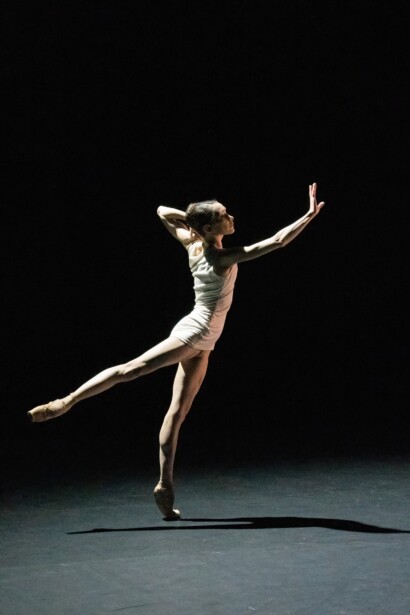 Anna Ol in the choreography «On The Nature of Daylight» by David Dawson
Anna Ol in the choreography «On The Nature of Daylight» by David Dawson
On the 22nd and the 23rd of September I will be taking pictures of the “Homage to ballet” gala in Theater 11 in Zurich where worldwide ballet stars such as Iana Salenko, Polina Semionova and Friedmann Vogel among many other fantastic dancers will be performing breathtaking choreographies. Some of my pictures will be made public shortly after so that you get the possibility to fully experience my work and travel through the pictures to the memories of the live performance as well as compare the view from the audience to my close encounter with the artist.
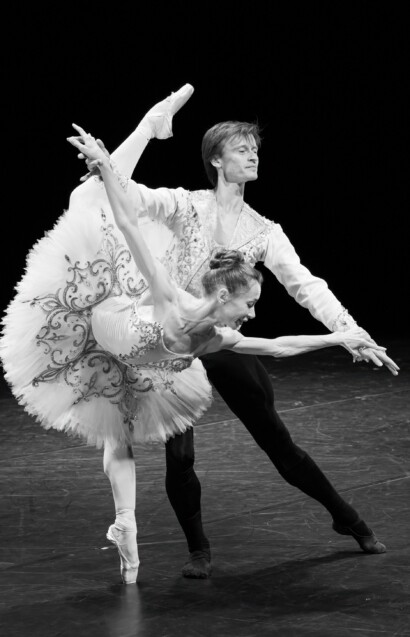 Iana Salenko & Marian Walter in the choreography «Diamonds» by George Balanchine
Iana Salenko & Marian Walter in the choreography «Diamonds» by George Balanchine
Claudia’s photography has received recognition through prestigious awards and exhibitions. Let’s discuss these achievements and the impact they have had. First, Congratulations on your successes in various photography awards and exhibitions! How have these accolades influenced your work and recognition within the industry?
I feel honored to be appreciated worldwide. It is a great support and it brings me joy knowing that my art gets such a positive feedback not only from dancers and choreographers I work with but also from professional critic and audience. I guess in the future I will be traveling a little more.
Your photography has been exhibited at prominent venues, including Zurich Main Station and photoSCHWEIZ – the largest photography exhibition in Switzerland. Can you describe your process of curating and selecting your dance photography for these exhibitions?
Photo exhibitions are mostly build by an expert curator. My work is chosen following a jury decisions in case of a competition or it is the curator that contacts me asking for a specific work. You can find some of the pictures that got exhibited on my website: enscene.ch/photography And I have some great news: A full photo exhibition of my works is in the programming phase. More information will be made official soon.
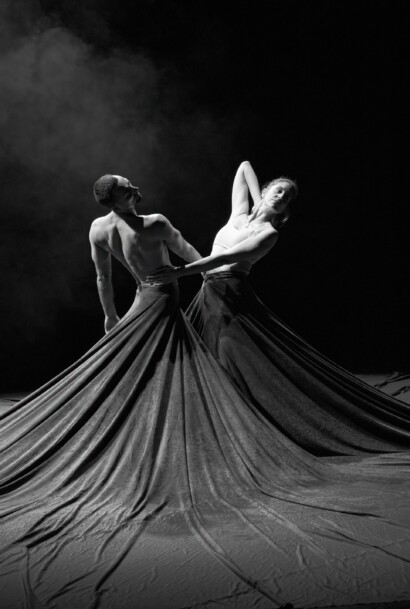
Sarah-Jane Brodbeck & Arshak Ghalumyan in the choreography «Unreachable places» by Jiří Bubeníček
Now, let’s return to Claudia’s mentoring program and delve deeper into its personalized approach. You mentioned tailoring your mentoring program to individual dancers. How do you analyze strengths and weaknesses, and what specific everyday exercises do you recommend to help dancers improve?
It all starts with connecting with each other. It is of utmost importance to get to know the dancer, as a dancer and as a human with all the qualities and expectations. Whether the goal is an audition, an intensive course or an application for a professional ballet school I prepare a concrete plan to supply to the necessities of the mentee. I do as well rely on a great team of experts and consultants to make sure that the plan has the highest standard in all of its parts. In today’s digital age, creating a strong first impression is crucial. How do you approach creating professional dance pictures, videos, and a modern Curriculum Vitae for your mentees? An important part of my network is a relatively long list of ballet school and company directors and their feedback was crucial for the purpose of understanding better the requirements of a proper CV, presentation letter or video. A good first impression is the key to getting an invitation for the audition and a chance of delivering the knowledge acquired in the mentoring process. My part consists in being constantly up to date with the latest tendencies and trends in the matter of application processes and digital competence.
Finally, let’s wrap up the interview by discussing the broader impact of dance photography and Claudia’s perspectives on its significance. In your experience, how does dance photography contribute to the appreciation and documentation of dance as an art form? What unique qualities do you believe photography brings to the portrayal of dance?
Dance photography is for me more than mere documentation of an event. We all know how sometimes a particular fragrance can make us go back to a forgotten moment of our past or relive intense emotions. My aim is very similar: in one eyeblink you can embrace the colors, hear the music and feel the warmth of the stage lights and therefore be transported to a different world and have your spirit elevated. Shouldn’t that be the ultimate goal of all the arts?
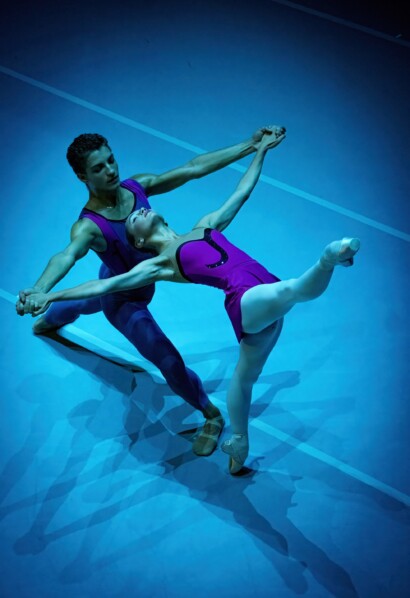
Yeva Hrytsak & Giacomo Mori in the choreography «Under the sway of thy gentle wings» by Seh Yun Kim
Before we conclude, could you share a collaboration you’ve had with dancers or choreographers to create specific concepts or narratives through your photography?
I can do better and give you something to look forward to: my upcoming art exhibition will consist of choreography, music and a very special narrative. Sounds cool no?
 Polina Semionova in the choreography «Cinque» by Mauro Bigonzetti
Polina Semionova in the choreography «Cinque» by Mauro Bigonzetti
Thank you, Claudia, for sharing your valuable insights and experiences as a cultural manager, mentor, and dance photographer. It’s been a pleasure to explore your multifaceted career.
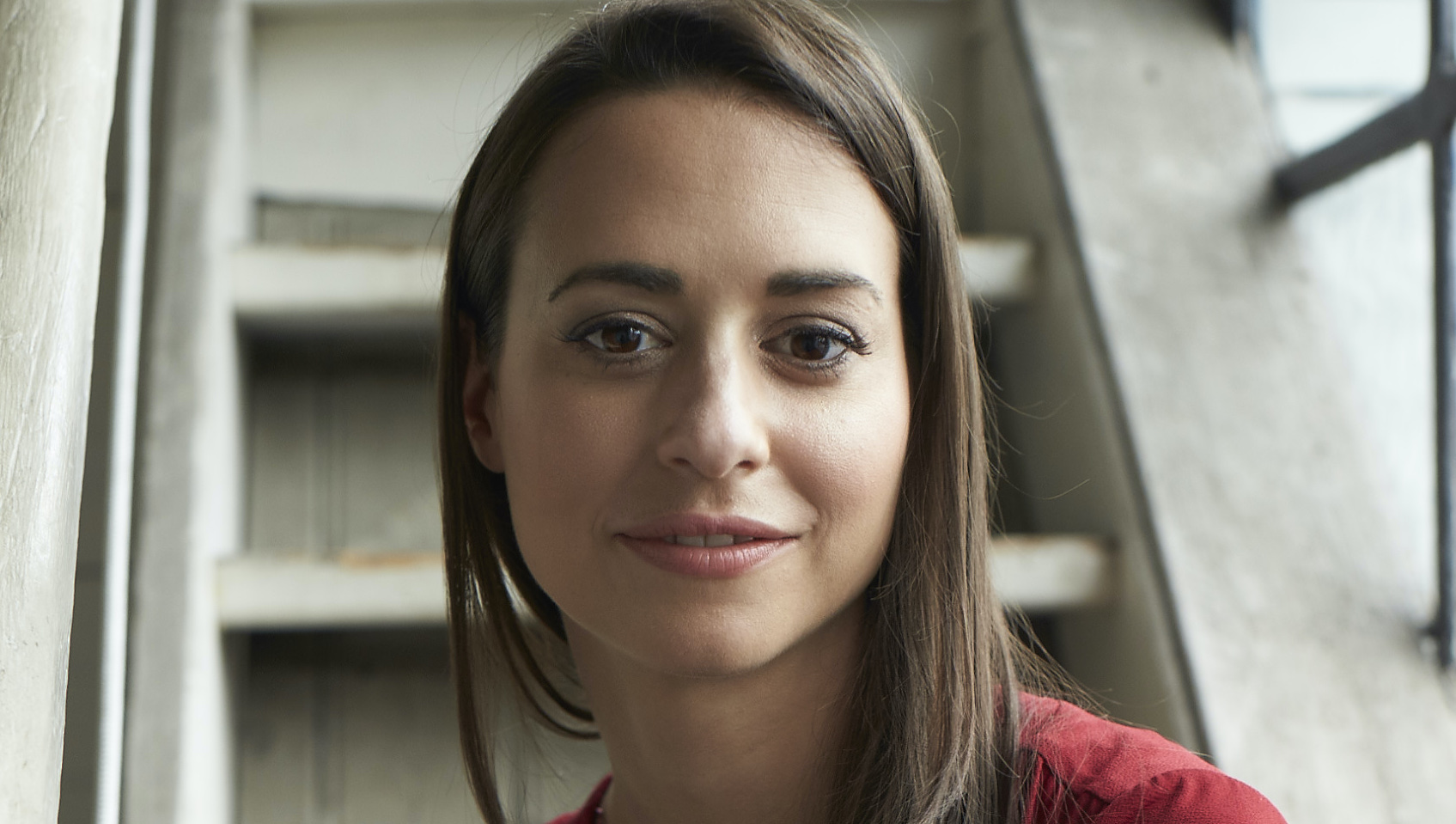
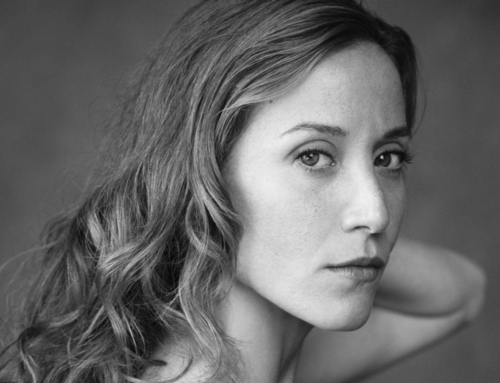
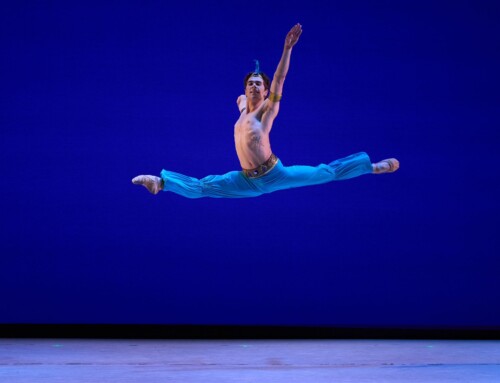
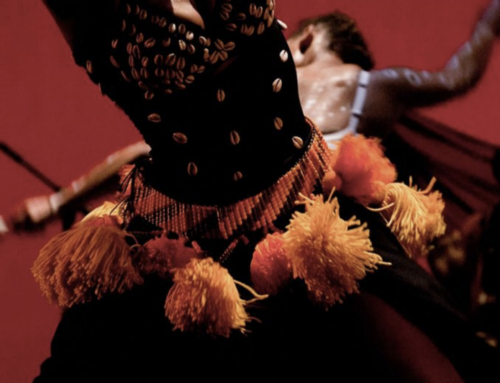

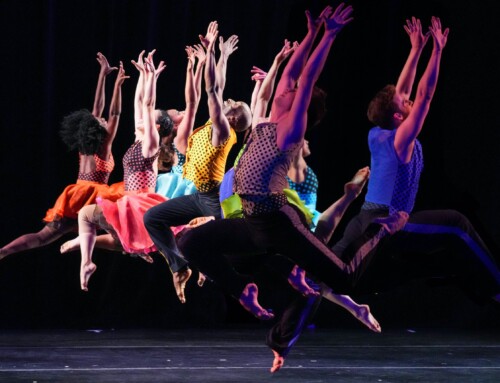
9y1z07
Несомненно свежие новинки индустрии.
Все события известнейших подуимов.
Модные дома, лейблы, высокая мода.
Свежее место для трендовых хайпбистов.
https://malemoda.ru/
Абсолютно актуальные события модного мира.
Важные мероприятия мировых подуимов.
Модные дома, лейблы, гедонизм.
Самое лучшее место для трендовых хайпбистов.
https://fashionvipclub.ru/
Несомненно стильные новости мировых подиумов.
Все события самых влиятельных подуимов.
Модные дома, торговые марки, гедонизм.
Лучшее место для трендовых хайпбистов.
https://sneakero.ru/
Несомненно стильные новости подиума.
Все эвенты мировых подуимов.
Модные дома, лейблы, высокая мода.
Самое приятное место для стильныех людей.
https://sneakerside.ru/
Очень важные новинки моды.
Важные эвенты лучших подуимов.
Модные дома, торговые марки, высокая мода.
Самое лучшее место для модных людей.
https://sneakersgo.ru/
Best wristwatch news and events. Actual collections, models. Important information about famous watch companies.
https://chrono.luxepodium.com/
Наиболее трендовые новости подиума.
Актуальные новости всемирных подуимов.
Модные дома, лейблы, высокая мода.
Свежее место для модных людей.
https://ulmoda.ru/
Полностью важные события моды.
Абсолютно все новости всемирных подуимов.
Модные дома, бренды, гедонизм.
Приятное место для трендовых людей.
https://paris.luxepodium.com/
Fashion, luxury, hedonism
The best fashion home for hypebeasts and stylish people.
Style news, events. New collections, collaborations, limited editions.
https://watch.lepodium.net/
Style, luxe, hedonism
Good fashion startpage for hypebeasts and stylish people.
Podium news, events. Fresh collections, collaborations, limited editions.
https://watch.lepodium.net/
Точно свежие события мировых подиумов.
Актуальные новости мировых подуимов.
Модные дома, лейблы, гедонизм.
Приятное место для модных хайпбистов.
https://richlifestyle.ru/
Несомненно трендовые события модного мира.
Важные мероприятия самых влиятельных подуимов.
Модные дома, торговые марки, гедонизм.
Самое лучшее место для стильныех людей.
https://furluxury.ru/
Полностью свежие новинки моды.
Исчерпывающие новости самых влиятельных подуимов.
Модные дома, лейблы, haute couture.
Самое приятное место для стильныех людей.
https://balenciager.ru/
Самые актуальные события мира fashion.
Абсолютно все новости всемирных подуимов.
Модные дома, лейблы, гедонизм.
Лучшее место для стильныех хайпбистов.
https://outstreet.ru/
LeCoupon: актуальные события для любителей вещевого шоппинга
Лента новостей, события, стильные образы, мероприятия, коллекции, показы.
[url= https://qrmoda.ru/]https://qrmoda.ru/[/url]
LeCoupon: актуальные новости для любителей fashion шоппинга
Лента новостей, события, стильные образы, мероприятия, коллекции, показы.
[url= https://qrmoda.ru/]https://qrmoda.ru/[/url]
Наиболее свежие новости индустрии.
Важные эвенты мировых подуимов.
Модные дома, бренды, гедонизм.
Самое приятное место для трендовых хайпбистов.
https://egomoda.ru/
xfvr1o
Точно важные события мира fashion.
Исчерпывающие эвенты известнейших подуимов.
Модные дома, торговые марки, гедонизм.
Самое приятное место для модных хайпбистов.
https://whitesneaker.ru/
Полностью стильные новости подиума.
Важные новости самых влиятельных подуимов.
Модные дома, торговые марки, высокая мода.
Интересное место для трендовых хайпбистов.
https://urban-moda.ru/
Абсолютно трендовые новинки индустрии.
Важные новости самых влиятельных подуимов.
Модные дома, бренды, высокая мода.
Лучшее место для модных людей.
https://worldsfashion.ru/
pin up yukle: pin up onlayn kazino – pin up casino azerbaycan
http://northern-doctors.org/# mexican pharmacy
buying from online mexican pharmacy: mexican pharmacy online – mexican online pharmacies prescription drugs
mexican online pharmacies prescription drugs: mexican northern doctors – buying prescription drugs in mexico online
http://northern-doctors.org/# purple pharmacy mexico price list
medication from mexico pharmacy: Mexico pharmacy that ship to usa – mexican border pharmacies shipping to usa
п»їbest mexican online pharmacies: northern doctors pharmacy – п»їbest mexican online pharmacies
mexico pharmacy: mexican pharmacy online – reputable mexican pharmacies online
https://northern-doctors.org/# medicine in mexico pharmacies
http://northern-doctors.org/# mexican mail order pharmacies
mexican mail order pharmacies: northern doctors pharmacy – mexican drugstore online
https://northern-doctors.org/# mexico pharmacy
http://northern-doctors.org/# mexican drugstore online
mexican pharmaceuticals online: mexican pharmacy – medicine in mexico pharmacies
mexico pharmacies prescription drugs: mexican northern doctors – mexican border pharmacies shipping to usa
https://northern-doctors.org/# medicine in mexico pharmacies
medication from mexico pharmacy: mexico pharmacies prescription drugs – mexican drugstore online
https://northern-doctors.org/# mexican pharmaceuticals online
mexican drugstore online: northern doctors – mexico drug stores pharmacies
mexican mail order pharmacies: mexican pharmacy online – buying from online mexican pharmacy
buying from online mexican pharmacy: mexican northern doctors – mexican pharmacy
https://northern-doctors.org/# mexican rx online
п»їbest mexican online pharmacies: Mexico pharmacy that ship to usa – medication from mexico pharmacy
https://northern-doctors.org/# mexican drugstore online
п»їbest mexican online pharmacies: northern doctors – mexican rx online
http://northern-doctors.org/# buying prescription drugs in mexico online
https://northern-doctors.org/# mexico drug stores pharmacies
http://northern-doctors.org/# pharmacies in mexico that ship to usa
mexican pharmaceuticals online: northern doctors pharmacy – mexican pharmaceuticals online
mexico drug stores pharmacies: northern doctors – best online pharmacies in mexico
http://northern-doctors.org/# mexican online pharmacies prescription drugs
best online pharmacies in mexico: mexican pharmacy – purple pharmacy mexico price list
mexico drug stores pharmacies: buying prescription drugs in mexico – mexico pharmacies prescription drugs
https://northern-doctors.org/# buying prescription drugs in mexico
mexico drug stores pharmacies: mexican pharmacy online – buying from online mexican pharmacy
https://northern-doctors.org/# buying from online mexican pharmacy
mexican drugstore online: mexican northern doctors – mexico pharmacy
https://northern-doctors.org/# mexican pharmacy
п»їbest mexican online pharmacies: northern doctors pharmacy – buying prescription drugs in mexico online
buying prescription drugs in mexico: mexican northern doctors – medication from mexico pharmacy
medication from mexico pharmacy: mexican pharmacy online – п»їbest mexican online pharmacies
http://northern-doctors.org/# mexican border pharmacies shipping to usa
medicine in mexico pharmacies: mexican northern doctors – medicine in mexico pharmacies
medication from mexico pharmacy: mexican pharmacy online – reputable mexican pharmacies online
http://northern-doctors.org/# best online pharmacies in mexico
mexico pharmacy: mexican pharmacy online – medicine in mexico pharmacies
mexican drugstore online: northern doctors – best online pharmacies in mexico
https://northern-doctors.org/# mexican online pharmacies prescription drugs
mexican online pharmacies prescription drugs: northern doctors – pharmacies in mexico that ship to usa
best online pharmacies in mexico: northern doctors – mexico drug stores pharmacies
https://northern-doctors.org/# п»їbest mexican online pharmacies
п»їbest mexican online pharmacies: mexican pharmacy – buying prescription drugs in mexico online
https://northern-doctors.org/# buying from online mexican pharmacy
mexican online pharmacies prescription drugs: mexican pharmacy – mexican pharmaceuticals online
https://northern-doctors.org/# buying from online mexican pharmacy
buying from online mexican pharmacy: northern doctors – mexican pharmacy
reputable mexican pharmacies online: Mexico pharmacy that ship to usa – buying prescription drugs in mexico online
http://northern-doctors.org/# mexican online pharmacies prescription drugs
http://northern-doctors.org/# mexican pharmaceuticals online
mexican border pharmacies shipping to usa: Mexico pharmacy that ship to usa – mexican rx online
http://northern-doctors.org/# buying prescription drugs in mexico
http://cmqpharma.com/# medicine in mexico pharmacies
mexico pharmacies prescription drugs
http://cmqpharma.com/# mexico drug stores pharmacies
reputable mexican pharmacies online
mexican pharmacy [url=https://cmqpharma.online/#]online mexican pharmacy[/url] mexican mail order pharmacies
buying prescription drugs in mexico [url=https://cmqpharma.online/#]mexican online pharmacy[/url] mexico pharmacy
mexico drug stores pharmacies [url=https://cmqpharma.online/#]cmq pharma[/url] mexico pharmacies prescription drugs
mexico pharmacy [url=https://cmqpharma.com/#]online mexican pharmacy[/url] mexican border pharmacies shipping to usa
reputable mexican pharmacies online [url=https://cmqpharma.online/#]mexican pharmacy online[/url] п»їbest mexican online pharmacies
reputable mexican pharmacies online [url=https://cmqpharma.com/#]cmq pharma mexican pharmacy[/url] mexican online pharmacies prescription drugs
mexican rx online [url=https://cmqpharma.com/#]cmq mexican pharmacy online[/url] mexican border pharmacies shipping to usa
best online pharmacies in mexico [url=https://cmqpharma.com/#]mexican pharmacy[/url] medication from mexico pharmacy
mexico drug stores pharmacies [url=http://cmqpharma.com/#]purple pharmacy mexico price list[/url] buying prescription drugs in mexico online
medicine in mexico pharmacies [url=https://cmqpharma.com/#]mexican pharmacy online[/url] medication from mexico pharmacy